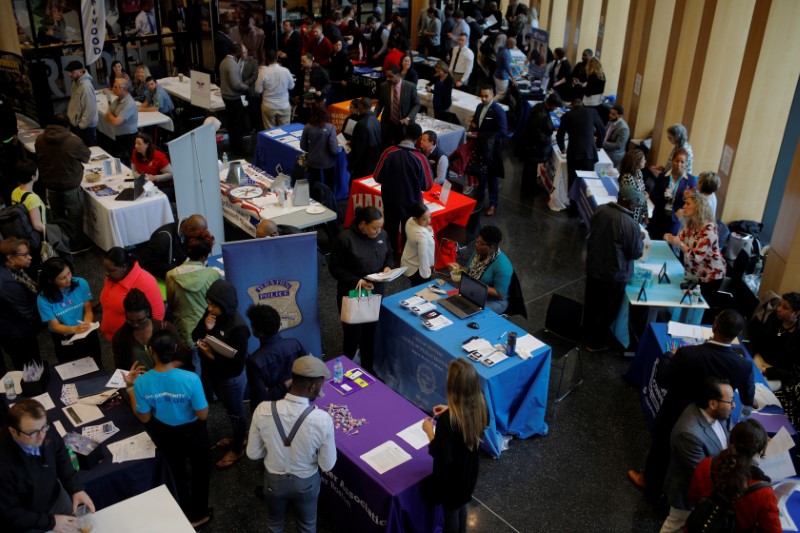 © Reuters. FILE PHOTO: Job seekers speak with potential employers at a City of Boston Neighborhood Career Fair on May Day in Boston
© Reuters. FILE PHOTO: Job seekers speak with potential employers at a City of Boston Neighborhood Career Fair on May Day in BostonWASHINGTON (Reuters) – Maintaining the U.S. unemployment rate at its current low level is likely to bring black and Hispanic jobless rates closer to that of whites, a team of researchers including San Francisco Federal Reserve president Mary Daly concluded in a paper released on Thursday.
The current national unemployment rate of 4 percent is below most estimates of full employment, and running that sort of “hot” economy for as long as possible could also narrow the gap in jobless rates between the less educated and those with college degrees, the team found in an exploration of whether periods of particularly low unemployment narrow some of the persistent gaps in unemployment between different groups.
The study looked at the differences in unemployment rates among people with different education levels, and between whites on one hand, and blacks and Hispanics on the other.
“We read the overall evidence … as indicating that the employment experience of … African Americans and Hispanics, as well as that of those with less than a college degree, has improved relatively more compared to whites of the same gender as the labor market has strengthened,” the group concluded in the paper released as part of a Brookings Institution economic research conference this week.
The research reaffirms a long list of studies over the years concluding that minority groups and the less educated lose their jobs faster in downturns, but benefit as conditions improve and markets tighten.
In the years after the 2007-2009 financial crisis, for example, the unemployment rate for whites fell to just below 8 percent by August 2011 but persisted at 16.4 percent for blacks, near its recession-era high. As of November it was around 6 percent for blacks and 3.5 percent for whites.
This most recent research comes as the Fed is considering just how long it can keep rates at their current level without risking inflation or other costs.
The current unemployment rate is below most estimates of what can be sustained without inflation. However, there is little evidence inflation is accelerating, and many at the Fed feel the unemployment rate could fall even further and stay there.
The paper also looked at whether a longer period of low unemployment might help lagging rural areas to catch up, but concluded the causes of poor rural performance “seem to be structural and are not ameliorated by a strong national labor market.”
Fusion Media or anyone involved with Fusion Media will not accept any liability for loss or damage as a result of reliance on the information including data, quotes, charts and buy/sell signals contained within this website. Please be fully informed regarding the risks and costs associated with trading the financial markets, it is one of the riskiest investment forms possible.
Source: Investing.com





























